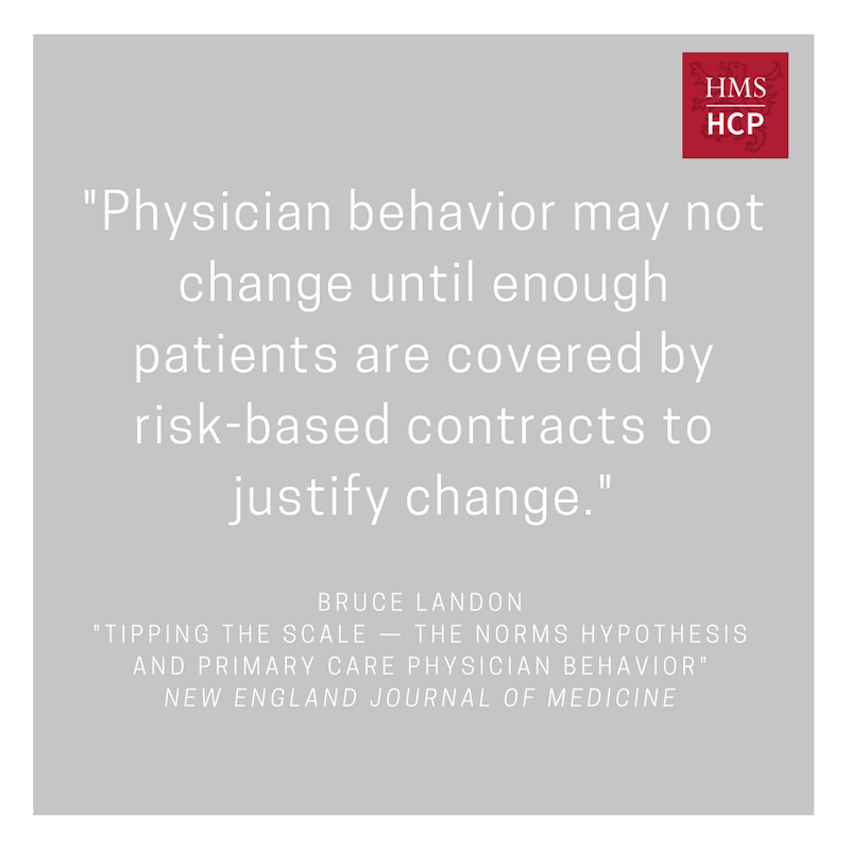
On March 2, 2017, Bruce Landon and Michael McWilliams published Perspective pieces in the New England Journal of Medicine that tackle payment systems in health care—specifically, problems inherent in current thinking about health care spending, and different ways of looking at the issues.
Landon, who writes frequently about the problems of fee-for-service payment, analyzed ways to succeed under reformed payment systems. Early results for innovating payment models like global payment and other risk-based strategies have been underwhelming. One key problem, according to Landon, is that they will be unsuccessful until they trigger a response in physicians to change their behavior.
Physicians, particularly primary care physicians, are targeted for strategies to control spending because they most often oversee a patient’s holistic care. When faced with patients under different kinds of models, although they might tailor their treatment to each model, it is more likely that they will develop a generalized strategy that is responsive to their overall financial incentives (such behavior is consistent with a theory of behavior called the “norms hypothesis”).
Thus, according to Landon, physician behavior will not change until substantially more patients begin to be reimbursed under alternative payment methods—and that behavior change may, in turn, drive success under these models. It is not yet known where the “tipping point” for this behavior lies.
McWilliams’ NEJM piece, written with medical student Aaron Schwartz, dissected the assumption of high-cost patients driving health care spending.
Evidence that a large proportion of health care spending is concentrated among a small proportion of patients has galvanized a focus on high-cost patients. On the surface, this response may seem sensible: in terms of clinical outcomes, the system fails the highest-need patients the most, and insofar as its failures can be addressed through better care coordination and management, devoting resources to high-risk patients could enhance these efforts’ cost-effectiveness.
If the objective is to reduce wasteful spending, however, that logic may not hold. As the authors explain in this perspective piece, a focus on high-cost patients may not only fail to contain health care spending, it may help to entrench the status quo, since targeting specific patients suits existing provider structures developed under fee-for-service incentives.
Enjoy content like this? Sign up for our newsletter and follow HCP on Twitter.